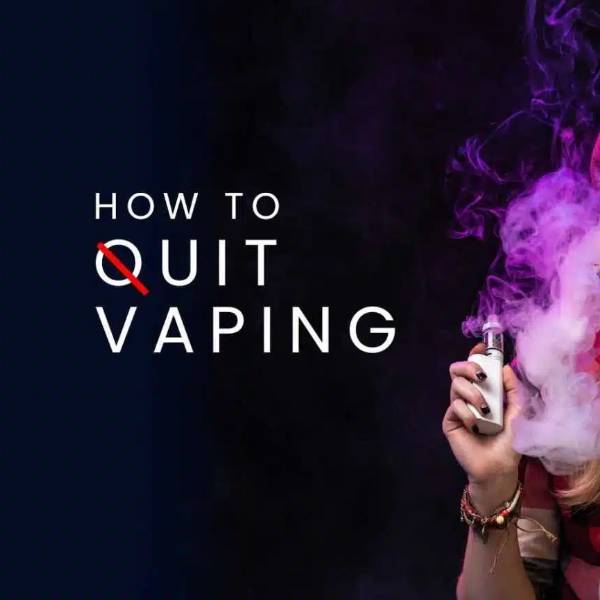Second-hand vape is more harmful than that from traditional cigarettes
In recent years, a global trend of vapes has swept across the world. The number of vape users worldwide is rising rapidly. Some people start using vapes because the merchants claim that they can help quit smoking. While another group of people are attracted by the diverse flavors of vapes. At present, most people believe that the harm of vapes is less than that of traditional cigarettes, especially second-hand vapes.
Many people believe that second-hand vapes are not within the traditional category of second-hand smoke and pose no harm to the human body, so they have no reservations in public places. However, in reality, the latest research shows that second-hand vapes, like traditional second-hand smoke, can cause harm to the health of people around them and increase the incidence of respiratory diseases such as bronchial inflammation or asthma.

Do you really understand the second-hand smoke from vapes?
Many people think that the vapor of vapes is not as pungent as that of traditional cigarettes, so they believe that vapes do not produce second-hand smoke and will not affect others. 🤔 but is that really the case? Today, let’s talk about the second-hand smoke issue of vapes and see just how much impact it has on the people around us! 👇 👇 👇
🧐 What is “vape second-hand smoke”?
🚬 Second-hand smoke from traditional cigarettes is the harmful smoke produced after burning tobacco, containing over 7,000 chemical substances such as tar and carbon monoxide, among which 69 are known to be carcinogenic and pose a great threat to those who inhale it passively.
💨 Second-hand smoke from vapes (actually called “second-hand vapor”) is the vapor produced by heating and atomizing e-liquid, without involving a combustion process. Its main components include:
✔ Nicotine (optional)
✔ Vegetable glycerin (VG
✔ Propylene glycol (PG
“✔ Flavoring

🚨 3 misconceptions about vape second-hand smoke, don’t be fooled!
❌ Misconception 1: The vapor from vapes is just “water vapor” and has no effect at all
Steam is not pure water vapor. It still contains components such as nicotine, flavoring, and propylene glycol. Long-term inhalation in a confined space may have an impact on people around!
❌ Misconception 2: Vapes do not affect others’ respiratory tracts
Some groups of people (such as asthma patients, children, and pregnant women) may be sensitive to propylene glycol and fragrance components. After inhalation, they may experience throat discomfort, coughing, and allergic reactions!
❌ Misconception 3: vapes can be smoked freely indoors
Many countries and regions have already included vapes in their “no-smoking areas”, such as airplanes, high-speed trains, some coffee shops, shopping malls, office buildings, etc. Before using them in public places, it is essential to confirm the local regulations first!
🧐 How to reduce the impact of second-hand smoke from vapes on others?
✅ 1. Avoid using in enclosed Spaces – such as cars, offices, air-conditioned rooms, etc. Steam is difficult to disperse. Try not to extract in these places!
✅ 2 choose low-nicotine or nicotine-free cartridges – this will reduce the impact of nicotine on people around you!
✅ 3. Control the amount of steam and don’t puff out smoke – in public places, try to use it discreetly and not disturb others!
✅ 4 pay attention to the feelings of people around you – do not use vapes in places where there are children, pregnant women, and non-smokers. Respect others!
🔥 summary: Does secondhand smoke from vapes have a significant impact?
Vapes have less second-hand smoke impact than traditional cigarettes, but they still contain nicotine and other components and cannot be considered completely harmless!
In confined Spaces and for special groups (children, pregnant women, and asthma patients), it is still necessary to avoid inhaling second-hand steam!
Reducing the occasions of use and choosing low-nicotine products can minimize the impact on others!
To the best of our knowledge, this is the first prospective study to report the impact of second-hand nicotine vape exposure on respiratory symptoms in adolescents and young adults. After controlling for sociodemographic characteristics, active vape and tobacco use in the past 30 days, and exposure to second-hand smoke, the study revealed the correlation between second-hand vapes and bronchitis symptoms and shortness of breath. These results have significant public health implications for people exposed to second-hand vapes.
Unlike active vape use and smoking, second-hand vapes are not voluntary. Therefore, if it is observed that the results have a causal relationship, there is a reason to ban the use of vapes in public places, just as exposure to second-hand tobacco smoke in public places has been prohibited for decades. Reducing the use of vapes indoors will alleviate the burden of respiratory diseases in the families of vape users.
Further epidemiological studies are needed to evaluate the reproducibility and universality of these findings in other age groups. Experimental research is needed to help determine whether these effects have a causal relationship.
“E-cigarettes don’t have second-hand smoke?” This view is wrong.” Chen Jun, an associate researcher at the Respiratory Disease Research Laboratory of West China Hospital of Sichuan University, said that since there is no measured smoke produced after combustion when smoking e-cigarettes, only the exhaled breath of the e-cigarette smoker is present. In comparison, the smoke and smell are indeed smaller. Therefore, many people think that e-cigarettes do not have the problem of second-hand smoke, but this is actually a wrong understanding.

